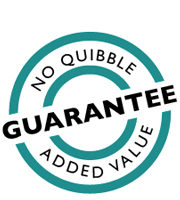Financial and management accounts explained

At a fundamental level, there are two types of accounting information:
- Financial accounts
- Management accounts
Financial accounts are geared towards external users of accounting information (i.e. investors, industry commentators and government agencies), whereas management accounts are geared towards internal users of accounting information.
Companies are required by law to prepare and publish financial accounts. Financial accounts describe the performance of a business as a whole (i.e. at the level of the legal entity), rather than analysing the component parts of a company. Financial accounts are prepared for a specific period of time, typically a year. The specific period is referred to as the ‘trading period’, and the period end date as the ‘balance sheet date’. Financial accounts have three key statements:
- The profit and loss statement showing income and expenditure for the trading period
- The balance sheet statement showing a breakdown of the net book value (NBV) of the company’s assets and liabilities at the period end date
- The cash flow statement showing a breakdown of the inflows and outflows of cash during the trading period
Financial accounts are historic, and most of the information that is provided, is financial in nature.
In contrast, management accounts are used to help management record, plan and control the activities of a business and to assist in the decision-making and decision-taking processes. They can be prepared for any period of time such as daily, weekly, monthly or yearly. Reports can be both forward looking or historic or a mix of both. Whilst there is no legal requirement to prepare management accounts, few businesses could expect to survive or thrive without them. Management accounts are prepared to meet the specific needs of the user and typically include both financial and non financial information. There are an infinite number of potential management reports a business could choose and examples include:
- Profit and loss showing actual versus forecast budget performance including this year versus last year to date and year to go
- Sales and margin report by business unit, product or service or by customer type and or by specific customer
- Number of employees, employee costs and productivity
- Customer service levels by customer, by depot and by product type
With management accounts, it is important that managers receive the information they need to run the business in good time and in a usable format.
To discuss your business critical issue
Please call Paul New on 020 8390 9972 or 07790 501225 or send a message.







